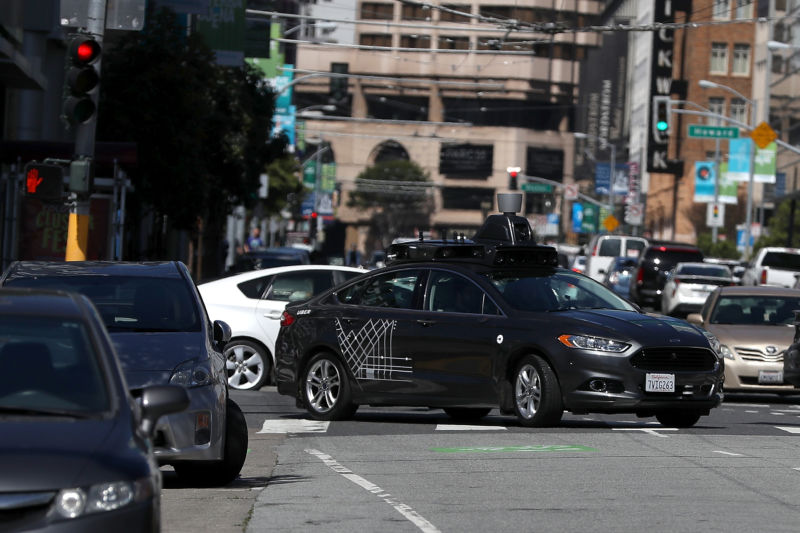May 26, 2018 at 09:31PM
via Ars Technica
Self-driving tragedy —
Driver says she was looking at an Uber touchscreen, not a smartphone, before crash.

Justin Sullivan/Getty Images
The National Transportation Safety Board has released its preliminary report on the fatal March crash of an Uber self-driving car in Tempe, Arizona. It paints a damning picture of Uber's self-driving technology.
The report confirms that the sensors on the vehicle worked as expected, spotting pedestrian Elaine Herzberg about six seconds prior to impact, which should have given it enough time to stop given the car's 43mph speed.
The problem was that Uber's software became confused, according to the NTSB. "As the vehicle and pedestrian paths converged, the self-driving system software classified the pedestrian as an unknown object, as a vehicle, and then as a bicycle with varying expectations of future travel path," the report says.
Things got worse from there.
At 1.3 seconds before impact, the self-driving system determined that an emergency braking maneuver was needed to mitigate a collision. According to Uber, emergency braking maneuvers are not enabled while the vehicle is under computer control, to reduce the potential for erratic vehicle behavior. The vehicle operator is relied on to intervene and take action. The system is not designed to alert the operator.
The vehicle was a modified Volvo XC90 SUV. That vehicle comes with emergency braking capabilities, but Uber automatically disabled these capabilities while its software was active.
The vehicle operator—who had been looking down in the seconds before the crash—finally took action less than a second before the fatal crash. She grabbed the steering wheel shortly before the car struck Herzberg, then slammed on the brakes a fraction of a second after the impact. The vehicle was traveling at 39mph at the time of the crash.
Dashcam footage of the driver looking down at her lap has prompted a lot of speculation that she was looking at a smartphone. But the driver told the NTSB that she was actually looking down at a touchscreen that was used to monitor the self-driving car software.
"The operator is responsible for monitoring diagnostic messages that appear on an interface in the center stack of the vehicle dash and tagging events of interest for subsequent review," the report said.
The driver said she had two cell phones in the car, but neither was used until after the crash, when she called 911.
A report from The Information's Amir Efrati earlier this month provides some valuable context for the NTSB's report.
"There's a reason Uber would tune its system to be less cautious about objects around the car," Efrati added. "It is trying to develop a self-driving car that is comfortable to ride in."
"Uber had been racing to meet an end-of-year internal goal of allowing customers in the Phoenix area to ride in Uber’s autonomous Volvo vehicles with no safety driver sitting behind the wheel," Efrati wrote.